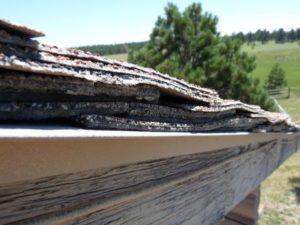Your roof is one of the most essential parts of your home. Like many home improvement projects, replacing a roof can be a pricey and even daunting task, especially if you haven’t done it before. If you’ve done some research on roofing, you’ve probably heard about layering new roof shingles over old ones, which can be easier and less expensive. But, there are significant drawbacks. To help you weigh your options, we’ve laid out the pros and cons of this technique below.
THE POSITIVES
It’s convenient: Installing a new roof directly over the old one means you can save time, and avoid the messy and labor intensive step of tearing off the old shingles.
It’s cheaper: Eliminating the tear off portion could probably save you thousands of dollars, however, it may not really pay off in the end. When you go to replace the roof again and you have to start from scratch, this time there will be two layers to remove, which will cost more for labor and disposal.
THE NEGATIVES
Additional shingles can shorten the life of your roof: First, the extra layer of shingles is likely to trap heat, causing the material to decompose more rapidly and forcing you to replace the roof earlier than you should. In fact, layering shingles can shorten your roof’s life by up to 40 percent.
Also, your roof was more than likely designed for just one layer of shingles. Adding a second layer, especially with high quality composite shingles, can be very heavy, adding 350-450 extra pounds per square. When snow or rain falls, this weighs down the shingles even more and adds a heavy burden to your roof and the overall home structure. This is exactly why many building codes allow roofs to have only 2 layers of shingles at maximum. With extra weight, you’re at risk for the roof sagging between rafters, which can trap moisture and cause rotting or decay.
It may not look so great: New roof shingles look their best when installed on a perfectly flat surface. When you layer them on top of old shingles that have curled or been damaged, you are likely to have some imperfections showing through on your new roof.
Negative inspection reports: If you’re looking for a quick roofing fix in order to sell your home, layering roof shingles might not be the best answer. Home inspectors will often see layered shingles and mark it as a negative on an inspection report, simply because it can be seen as a potential issue or problem to a new owner. If your home needs to be roofed before you put it up for sale, check with a home inspector or real estate agent and discuss the options so that you can be completely sure of the effects it will have on the sale of your home.
Layering shingles has some definite drawbacks, but in the right circumstances, it can be a great temporary solution. Just remember: A high quality, reliable roof is never a bad investment.


Leave A Comment
You must be logged in to post a comment.